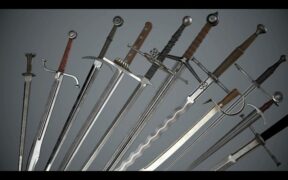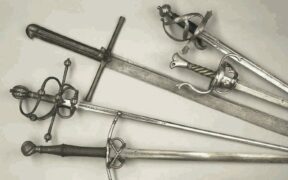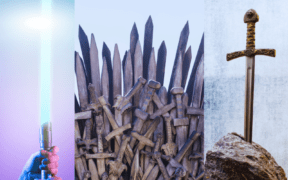Our content features commercial links to our products, committed to transparent, unbiased, and informed editorial recommendations. Learn More
The Gothic Sword Styles of History and Modern Media
NO AI USED This Article has been written and edited by our team with no help of the AI
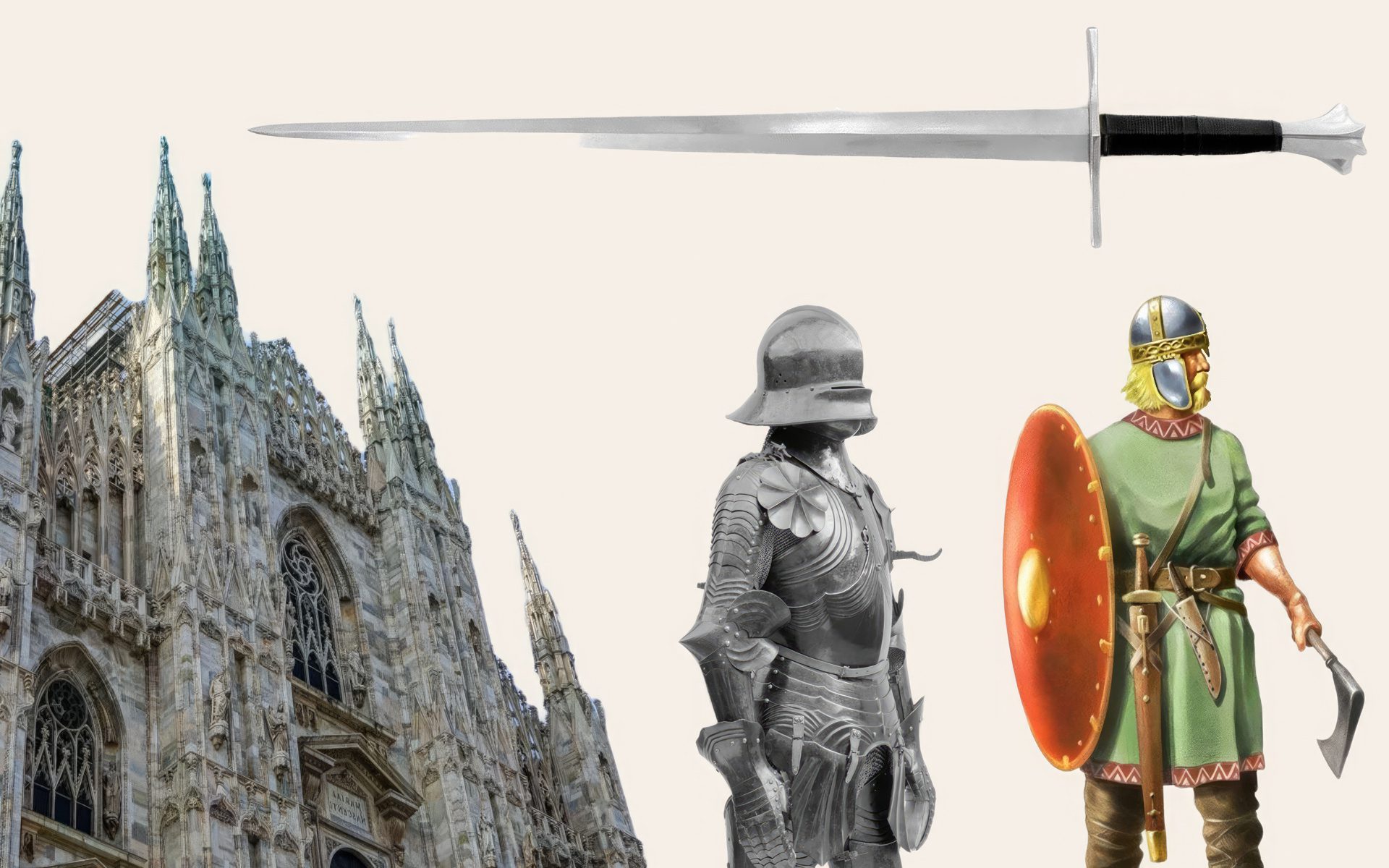
Historical and modern swords can come by various names, especially by today’s standards, where there are many fictional and real swords in media. One term frequently linked with swords is Gothic, a true historical European blade style.
The term Gothic is used by some sword producers to add market value to their blades, as the term can attract clients and give them a more sinister appeal.
In this article, you will discover where the word Gothic originates and what it truly means. Then we will look at some Gothic Sword types and their historical characteristics.
What is a Gothic Sword?
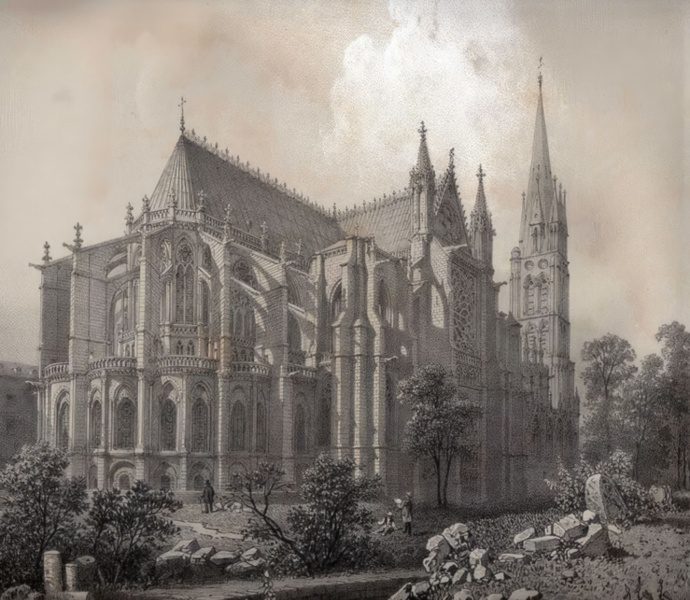
The Gothic Sword isn’t a blade used by the Goths or Visigoths, the North Germanic tribes that helped bring the downfall of the Roman Empire from the 3rd to the 5th century AD. Nor is it a sword with a dark connection to vampires or bloodthirsty monsters. It is instead a style of a European sword created by the French and Germans during the late Middle Ages and the early Renaissance period of the 15th and 16th century AD.
The word Gothic was coined by early Renaissance Italian writers to describe an architectural style used by the French and Germans. Humanism and Renaissance, the re-birth of ancient ideals as we know them, began in Italy.
Gothic was a derogatory term used to differentiate art, architecture, and sword style not seen as classical or ancient.
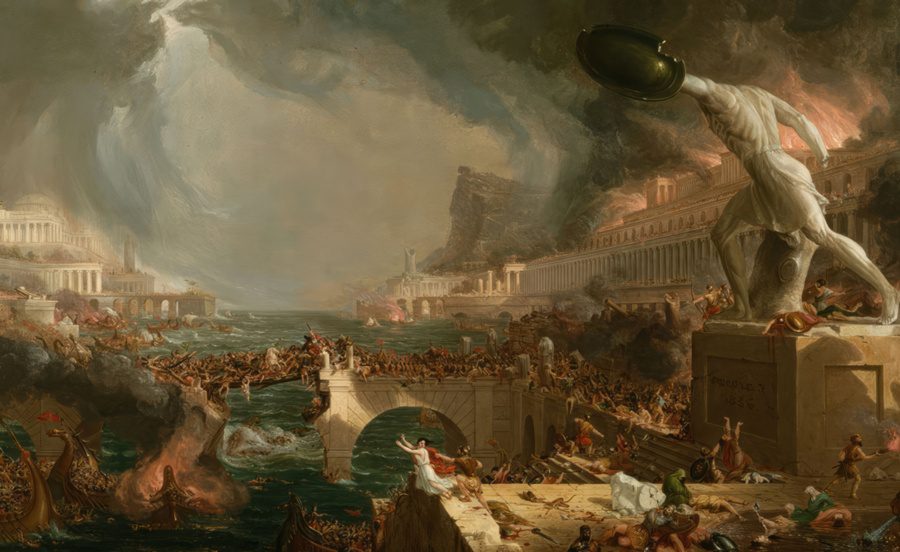
The Italian city-states used this term to reference the older and outdated style of the German people, referring to them as the Germanic tribes who sacked Rome and the Roman Empire. In Italy, the term Gothic was considered offensive, as it meant uneducated barbarians. However, the term lived on throughout history and today refers to European architecture from the 12th to the 16th century.
Italian Renaissance and late medieval swords featured more extravagant decorations and traits from mythology, while Gothic Germanic swords had Germanic symbols, such as twisted branches, and took inspiration from the arches in Gothic architecture.
Gothic Sword Type Examples
The word Gothic today can be used to mark any type of sword, despite its real use in history with a specific hilt design. This marking comes from the Goth lifestyle and music trend that started around the end of the 20th century. Gothic swords can be historical and have Germanic symbols while also taking some inspiration from the architecture. In contrast, others can be pure fantasy and have a darker theme with unorthodox sword elements like guard spikes, teeth blades, and skull pommels.
Historical Swords
First, we will present you with real and historical replicas of Gothic-style swords that were most frequent in the 15th and 16th centuries in Europe. Some of them were real war swords meant to be used in battle, while others were made as a form of art to keep the Gothic style alive.
Longsword
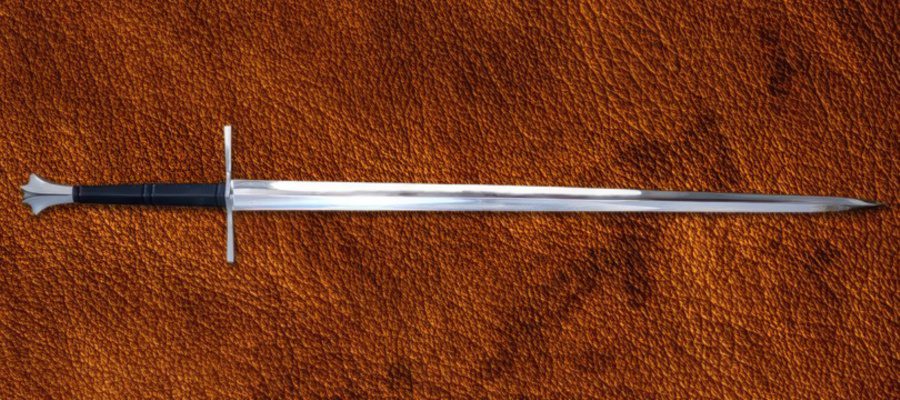
One of the prime examples of a historical Gothic Sword would be the Longsword. It is a blade that traces its existence to the 13th century, but its primary use wasn’t until a century and a half later. The Gothic style could have been inspired by the rising architectural designs crafted by Frankish bladesmiths. Despite having a Gothic look, it was a simple build that could be a battle-ready sword.
Zweihander

The Zweihander is a large German two-handed sword, one of the most commonly found Gothic swords. It features many elements of the Germanic tradition, such as the twisting and branching of the hilt and large arches and points, such as both guards. The Gothic Zweihannder can also come in a flaming blade style commonly called Flameberge today.
Messer
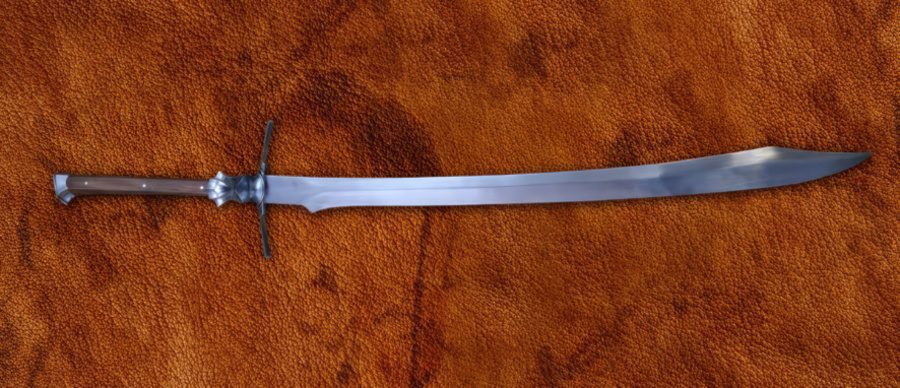
The Messer is another German sword that can have some Gothic elements to it. These swords, however, do not feature the usual twisted hilt design, as they were mostly weapons of the commoners. They had a simple design and were sometimes referred to as large knives. During the 16th century, the Gothic element on the Messer was usually a German Gothic style plate armor piece which was in the place of the metal crossguard quillon called a nagel.
Bastard Sword

The Bastard Sword is another popular Gothic blade that has Germanic elements on its hilts. It features a taping blade, a common trait on Gothic Swords, but their hilts can be used effectively with one or two hands. Some people call these types of blades Hand and a Half Swords.
Claymore
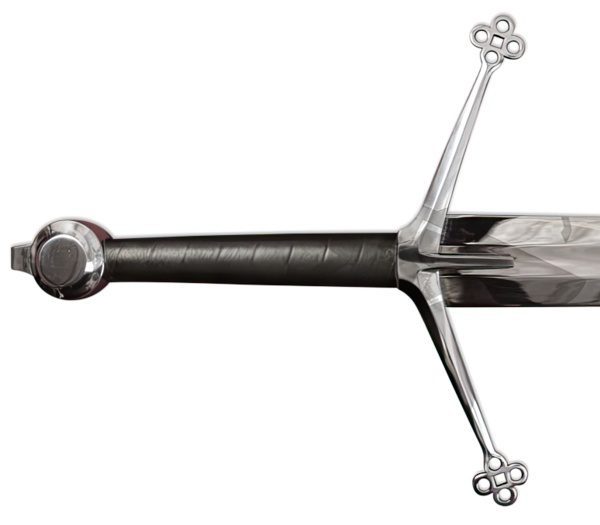
The larger Scottish Claymores used by the Highlanders could also come in a Gothic style. The hilt was made with the twisting Gothic style, and their unique narrowing guard was turned toward the blade. Some viewed this as the large pointy or hanging arches in the European Gothic architecture style, which was also popular throughout Scotland.
Basket Sabres
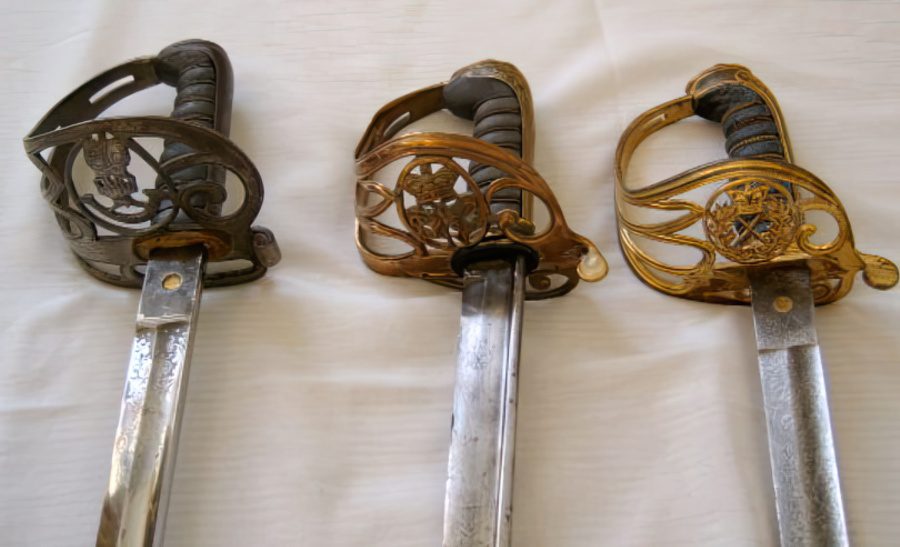
Gothic architecture flourished in England, which has some of the most beautiful Gothic cathedrals in the world. Because it was a popular style throughout the country, it made for an enticing sword flair. It is commonly found on their basket sabers used as infantry and cavalry swords throughout the 18th and 19th centuries. Some of the Gothic features on their swords are still in use today.
Arming Sword
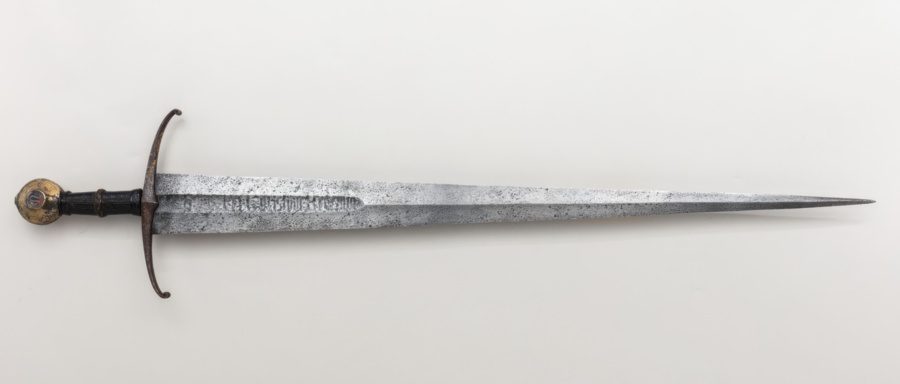
The most popular sword that was used throughout Europe, after the Viking Sword, was the one-handed Arming Sword. During the 15th century, Gothic Arming Swords with longer quillons and twisted or black-styled hilts became popular. Sometimes they were one-handed swords used as secondary warfare tools, but they were also used for artistic purposes.
Gothic Revival Sword
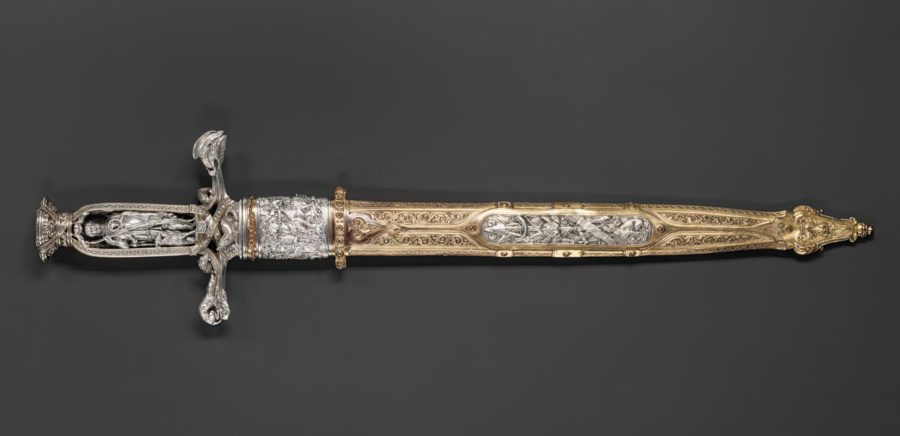
Another style of Gothic Swords that differs from the previous Germanic blades is the Gothic Revival style swords. These came about in 19th-century France to bring back the forgotten Gothic flare from the past. Most swords created with this style are Hunting or Hanger shortswords with ornamental elements found in Gothic architecture.
Fantasy Swords
Gothic is a term that is very popular in modern media, especially video games, where it is frequently used to describe swords. Despite having real Gothic historical blades, the Gothic Swords seen in these video games are nothing like them. Here we will present a couple of popular fantasy Gothic blades.
Gothic Fantasy Style
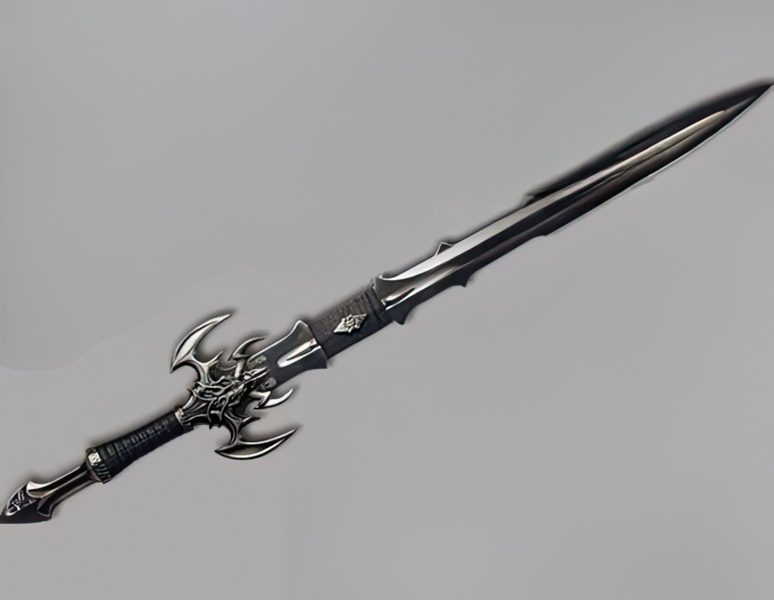
The most popular type of Gothic fantasy sword has darker elements, and it is usually all metal, and some parts have dark leather or wooden features. The guards and hilts are pointy and sharp and can have dragon or gargoyle elements, perhaps drawing inspiration from historical and real Gothic architecture. This style is one of the most popular swords in fantasy LARP (live-action role-playing) or reenactment events.
Katana
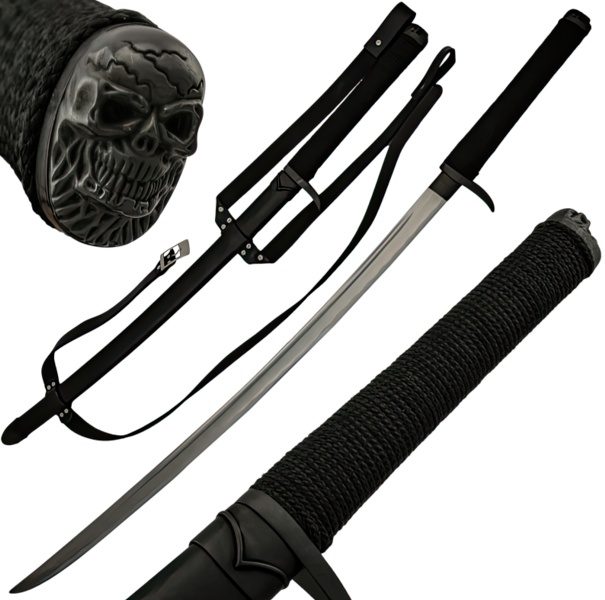
The Katana is a real sword used in Japan, but the Gothic Katana is a fantasy blade. This style of a Katana is usually made to be entirely dark and features many modern Gothic elements like skulls or spikes.
Characteristics of the Gothic Swords
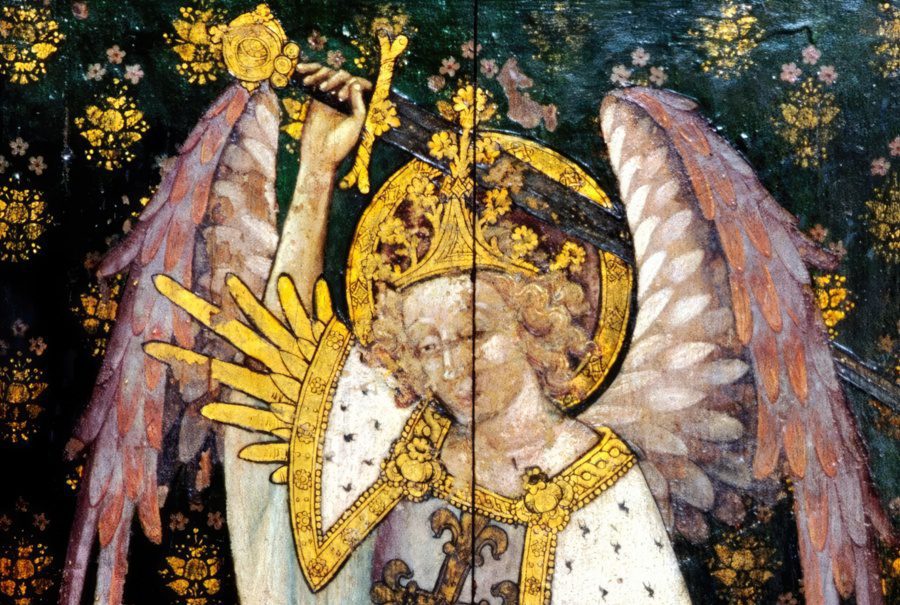
Gothic Swords can come in different shapes and sizes, and their length can vary and be as long as a great sword or as short as a dagger held in one hand. The strongest characteristic of the Gothic swords is their hilts.
Blade
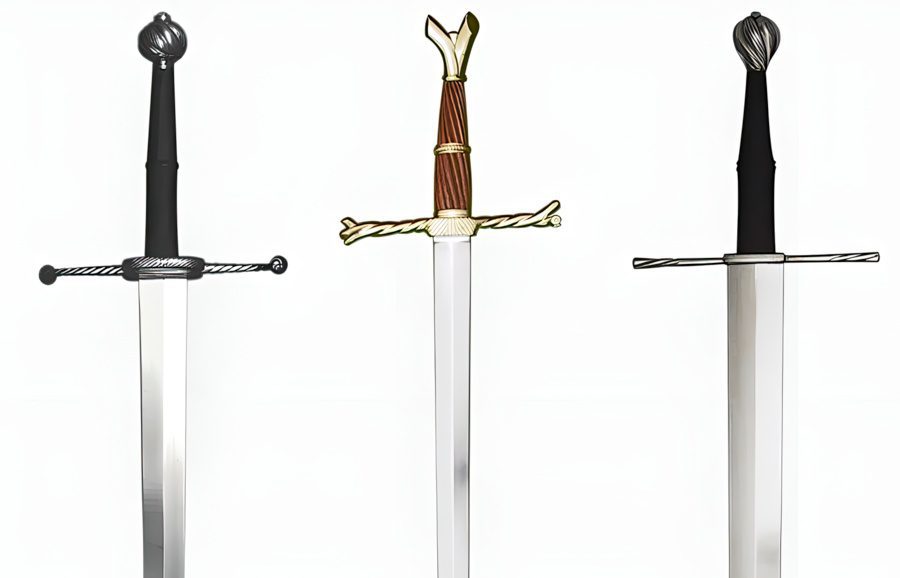
The blade of the Gothic Swords is that of the late 13th century, meaning double-edged and heavily tapering to a single sharp point with a variable blade length and width. There were Gothic warfare swords made out of high-carbon steel, but they could also be seen as a piece of Gothic art made of stainless steel to prevent rusting.
Handle
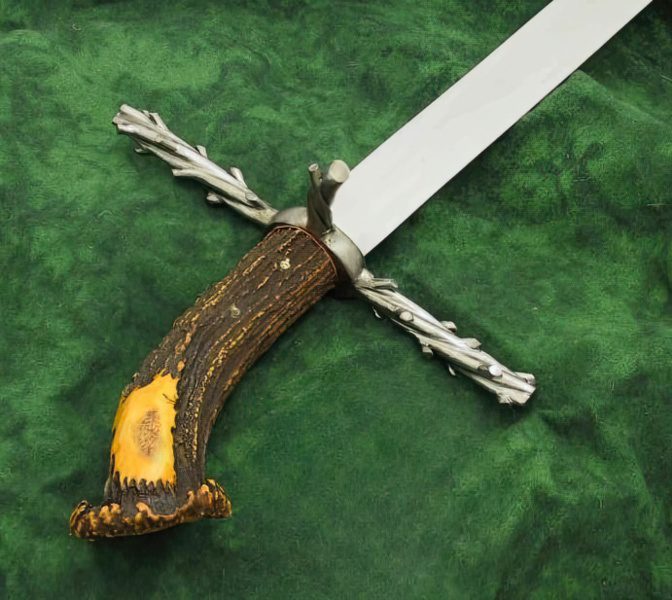
The hilt makes a sword Gothic and is its strongest characteristic. Gothic Swords feature many ancient sacred trees and grooves that could come from the early Pagan beliefs of the Germanic people. These designs usually twist and turn around the entire hilt, and sometimes they can be in the exact shape of a branch or tree trunk.
The Gothic Sword style was also inspired by Gothic architecture commonly seen on cathedrals of the high middle ages and easily recognized with swirling and ribbed designs that carried onto the swords. High-quality and functional Gothic swords have a leather handle twisted in the same style as the branches.
Pommel
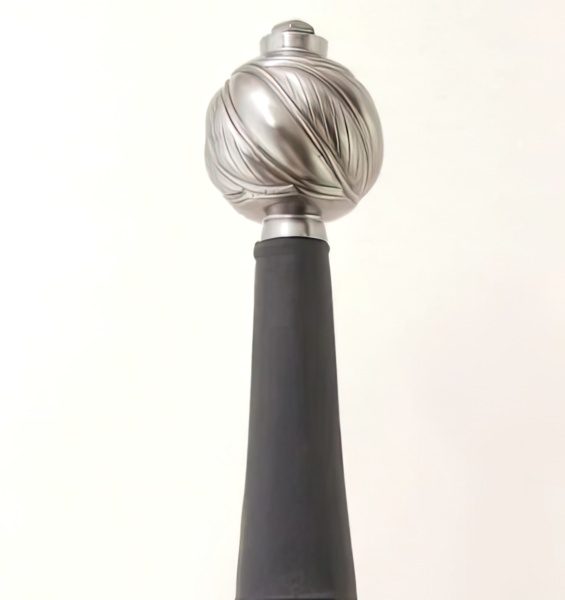
The pommels of the Gothic Swords are also twisted and turn to a side as the handle design itself. Although this is the most common case, Gothic Swords can feature regular pommels that are specifically large and round or fishtail pommels, depending on the type of sword.
